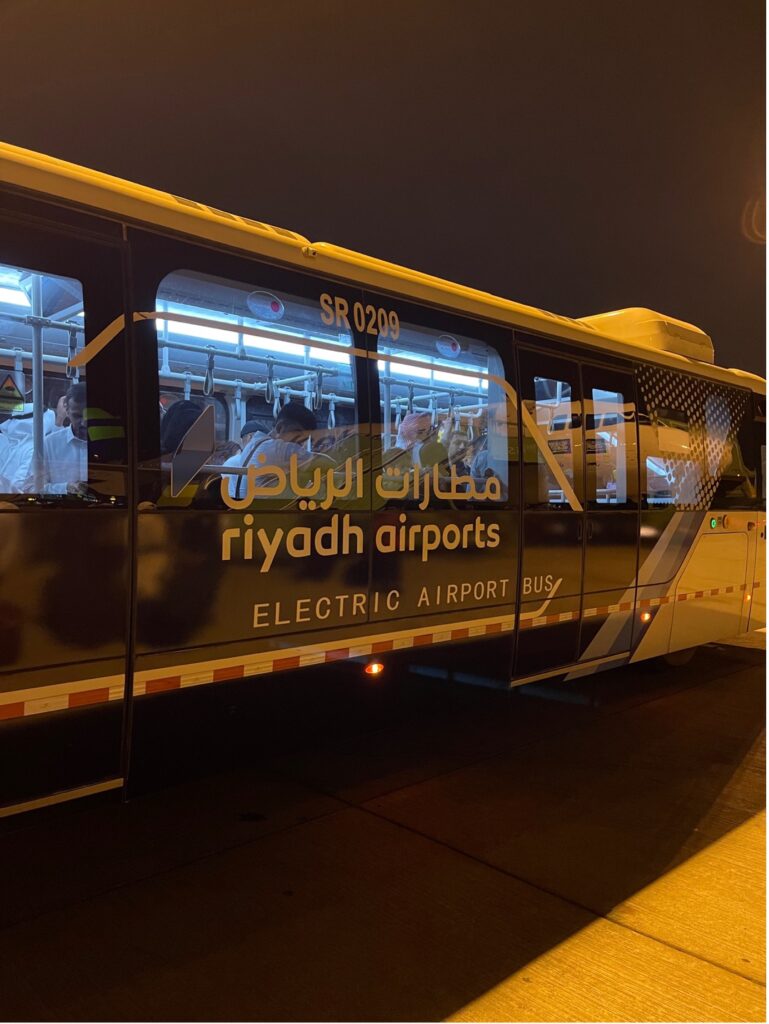Gulf States Give a Jolt to Electric Vehicles
- Aisha Al-Sarihi
- -

Despite their abundant and cheap oil resources, as well as the affordability of internal combustion engine (ICE) vehicles, it is notable that Gulf states — long synonymous with oil wealth — are increasingly adopting electric vehicles (EVs). This raises important questions about why these states are pursuing EV adoption, given the structural challenges involved, and motorists’ longstanding affinity for gas-guzzlers — SUVs form a significant percentage of vehicle sales there, for instance.
In recent years, sales of EVs in the Gulf Arab states – Bahrain, Kuwait, Oman, Qatar, Saudi Arabia, and the United Arab Emirates (UAE) – have increased six-fold, from only 4,380 units in 2022, to more than 160,000 units in 2023.[1] Gulf countries are also making strides in local EV manufacturing.
Demand for EVs is rising as the Gulf nations move to diversify their economies away from high dependence on hydrocarbon revenues, and to align themselves with global environmental sustainability measures. Additionally, a younger and more environmentally-conscious population is increasingly favouring EVs over petrol-burning vehicles.[2]
Economic and Environmental Motivations
The push towards EV adoption has been largely motivated by the need to diversify economies away from oil dependency as demand for hydrocarbons falls. According to the International Energy Agency, growing sales of electric vehicles in recent years have removed some five million barrels per day of world oil demand. Despite some concerns from prospective buyers, such as range anxiety, this figure continues to rise[3] due to the continued roll out of EV-friendly policies, and mandates to ban sales of vehicles powered by internal combustion engines around the world — many of which will take effect in about 10 years.[4]
By investing in EV technology and infrastructure, Gulf nations can create new opportunities that will help diversify their export portfolios, reducing their economies’ vulnerability to fluctuations in oil prices. These opportunities include launching new industries and clean energy value chains, such as battery manufacturing, and stimulate the roll out of renewable energy, thereby creating jobs and fostering innovation.
Environmental sustainability is another driving force behind the transition to EVs. Gulf countries are increasingly recognising the importance of reducing greenhouse gas emissions, and improving air quality. The transport sector is among the biggest contributors to greenhouse gas emissions in the region: It ranks second in Kuwait, and Saudi Arabia, and third in the other four nations. Only the power and industrial sectors come close. The adoption of EVs is seen as a crucial step in reducing road transport emissions.
The UAE: Leading the Charge
The UAE is at the forefront of the EV boom in the Gulf region. In 2023, the penetration rate of EV sales reached 5 per cent, compared to 1.2 per cent, and 0.2 per cent, in Qatar and Saudi Arabia, respectively[5]. The total unit sales of electric vehicles, including both fully electric and plug-in hybrid models, surged from 4,380 units in 2022 to 28,470 units in 2023[6]. As with other non-oil economic sectors such as renewables, this remarkable growth adds to the UAE’s growing reputation as a leader in innovation and future-proofing in the Gulf.
To support this growth, the UAE has begun ramping up the installation of charging infrastructure. As of 2023, there were 914 charging stations across the country, with plans to increase this number to 10,000 by 2030. It also aims for electric and hybrid vehicles to constitute 50 per cent of the total vehicle fleet by 2050[7]. These targets, however, remain relatively modest compared to those set even by some Asean nations: Singapore, for instance, already has 19,000 public charging outlets, and aims for 60,000 by 2030. It has also been estimated that 80 per cent of passenger vehicles in the Republic will be EVs come 2040.
EV Initiatives are also Emerging in Other Gulf Countries
- Bahrain: The country is working towards establishing a regulatory framework for EV adoption, but faces challenges in infrastructure development, and consumer awareness.
- Kuwait: Similar to Bahrain, Kuwait is in the early stages of EV adoption, with limited charging infrastructure, and a need for government incentives to stimulate demand.
- Oman: Oman has set a target of 22,000 EVs by 2030 and aims to install 350 public chargers by 2026. However, challenges, such as insufficient charging infrastructure, and higher upfront costs for consumers, remain.
- Qatar: Qatar is also exploring EV adoption. Qatar’s Ministry of Transport has set a target of having 35 per cent of total vehicle fleet and 100 per cent of its public transportation buses to be electric by 2030. Qatar General Electricity and Water Corporation (Kahramaa) plans to set up 600 to 1,000 electric vehicle charging stations between 2025 and 2030.[8]
- Saudi Arabia: Saudi Arabia has made a splash in the EV race, driven by government initiatives and partnerships. In 2020, the Ministry of Municipal Rural Affairs and Housing mandated that 5 per cent of public parking spaces be reserved for EVs, and that charging stations be installed in all car parks. In 2023, the Public Investment Fund (PIF) and Saudi Electricity Company established the Electric Vehicle Infrastructure Company (EVIQ), which aims to install over 5,000 fast chargers across more than 1,000 locations by 2030.
Manufacturing Ambitions
Gulf countries are also making strides in local EV manufacturing. The first EV manufacturing facility was founded in Dubai in 2022 by M Glory Holding Group, with the aim to produce 55,000 cars per year[9]. The UAE’s local brand, the Rabdan One, a five-seater SUV, was on display at the Adipec 2023 gathering in Abu Dhabi[10]. In addition, the gigafactory company, Statevolt, announced in April this year plans to construct a battery plant in Ras Al Khaimah.
In Abu Dhabi, EV product manufacturer NWTN, headquartered in Dubai, launched an assembly plant in 2023 in collaboration with Abu Dhabi Ports. Qatar Investment Authority (QIA) sunk US$907 million in United States-based SK On Co, the world’s largest battery maker in 2023, while Oman backed US-based electric vehicle start-up Our Next Energy (One).[11]
EV components are not the only items on the Gulf states’ radar — many have plans to build their own vehicles. In March this year, Oman released its first electric SUV prototype, named Mays Alive, with a goal to hit the roads by the end of this year.[12] Meanwhile, Saudi Arabia established its first local EV manufacturer, Ceer, in partnership with Taiwan’s Foxconn, and aims to produce a range of EVs by 2025, with an annual production target of 150,000 vehicles. Additionally, the PIF’s investment in US-based Lucid Motors opened its first international manufacturing facility in Jeddah in 2023.
China Marches In
Over the past decade, China has emerged as the world’s largest EV market. China’s EV production more than doubled over five years, from 1.27 million units in 2018 to 2.8 million by the end of 2023, accounting for nearly 60 per cent of global EV production.[13] This rapid growth has been largely driven by substantial policy support, including an estimated US$230 billion in government subsidies. While more than 80 per cent of China’s EVs are sold domestically, production now far exceeds local demand, prompting Chinese manufacturers to seek external markets for their vehicles.
EV exports from China, including those from foreign brands like Tesla, have increased dramatically — rising 160-fold between 2019 and 2023. This surge has raised concerns in the EU, US, and Canada about China’s growing dominance in the EV market. In response, they have imposed tariffs on Chinese-made EVs, with the US and Canada applying 100 per cent tariffs, and the EU introducing charges of as high as 45 per cent.
In light of these restrictions, Chinese manufacturers have turned their attention to smaller, emerging markets such as the Gulf states, South-east Asia, and Latin America. In the Gulf region, China’s competitively-priced EVs have quickly gained traction, offering a more affordable alternative to traditional Western and Japanese brands.
The Gulf’s commitment to economic diversification and its growing interest in EV adoption have made it a natural partner for Chinese carmakers. For example, Saudi Arabia’s Ministry of Investment recently signed a US$5.6 billion agreement with Chinese manufacturer Human Horizons to collaborate on the development, production, and sale of vehicles. Similarly, Abu Dhabi made a US$2.2 billion strategic investment in Chinese carmaker NIO, increasing its stake in the company to 20.1 per cent.
Challenges Ahead
Several incentives have been introduced to promote EV adoption across the Gulf. Dubai, for instance, launched incentives like lower registration fees, free EV parking spaces, free electronic road toll system (Salik) tags, and free charging through the public EV charging network of Dubai Electricity and Water Authority (DEWA).[14] Oman and Saudi Arabia have introduced similar incentives, including lower registration fees and exemptions from taxes for EV buyers.
However, challenges such as infrastructure limitations, high upfront costs, and consumer acceptance remain. The availability of charging stations is still limited in many areas, which can deter potential EV buyers. Electric vehicles also cost more to buy, further hindering adoption. While government incentives, such as tax breaks and exemptions from tolls, can help mitigate these costs, further measures may be necessary to make EVs more accessible to a broader group of consumers. Range anxiety is another factor, particularly in the arid Gulf: It has been estimated that when the temperature exceeds 40 degrees Celsius — it is not uncommon for the mercury to push 50 deg C during the summer months — range loss will become much more noticeable.
As Gulf nations work to develop human capital, foster innovation ecosystems, and integrate into global supply chains, they face stiff competition from other emerging EV manufacturers in the region, such as Turkey, Egypt, and Morocco. But given their logistics capabilities, connectivity, and relative political and fiscal stability, Gulf countries can fashion a competitive edge. China’s own interests in using the Gulf as a springboard for EV production, sales, and expert, will certainly help propel the region’s own ambitions in this realm forward.
End Notes
[1] Statistica. 2024. Electric Vehicles – GCC. https://www.statista.com/outlook/mmo/electric-vehicles/gcc#unit-sales
[2] Arab News. 2022. Growing GCC ownership of electric vehicles bodes well for a zero-emissions future. https://www.arabnews.com/node/2071226/business-economy
[3] Electric car sales and sales share in the Net Zero Scenario, 2015-2030. https://www.iea.org/data-and-statistics/charts/electric-car-sales-and-sales-share-in-the-net-zero-scenario-2015-2030
[4] IEA. 2023. Global EV Outlook 2023. Policy Developments. https://www.iea.org/reports/global-ev-outlook-2023/policy-developments
[5] Roland Berger. 2024. EV Charging Index: Expert insight from the GCC region. https://www.rolandberger.com/en/Insights/Publications/EV-Charging-Index-Expert-insight-from-the-GCC-region.html
[6] Ibid.
[7] Gulf News. 2023. 50% electric, hybrid cars on UAE roads by 2050: Minister. https://gulfnews.com/uae/environment/50-electric-hybrid-cars-on-uae-roads-by-2050-minister-1.99661948
[8] Doha News. 2023. Qatar to drive up electric vehicle sales by 2030 https://dohanews.co/qatar-to-drive-up-electric-vehicle-sales-by-2030/
[9] Zawya. 2022. Dubai welcomes first ever electric vehicle manufacturing facility https://www.zawya.com/en/business/manufacturing/dubai-welcomes-first-ever-electric-vehicle-manufacturing-facility-r1xecpkq
[10] The Rabdan One is manufactured by UAE electric car maker NWTN, which has its headquarters in Dubai and a vehicle assembly facility in Abu Dhabi: https://www.thenationalnews.com/business/future/2023/10/04/uae-made-rabdan-one-electric-vehicle-draws-crowds-at-adipec/
[11] Zawya. 2024. Analysis: GCC EV industry will continue to gain pace despite challenges. https://www.zawya.com/en/business/energy/analysis-gcc-ev-industry-will-continue-to-gain-pace-despite-challenges-sfqovitr
[12] Zawya. 2024. Oman’s first EV to be ready by year-end. https://www.zawya.com/en/world/middle-east/omans-first-ev-to-be-ready-by-year-end-szyj8cag
[13] Carbon Brief. 2024. Q&A: The global ‘trade war’ over China’s booming EV industry. https://www.carbonbrief.org/qa-the-global-trade-war-over-chinas-booming-ev-industry/
[14] Dubai EV Community Hub. https://dubaievhub.ae/government-framework/incentives/#:~:text=and%20local%20level.-,The%20UAE%20offers%20reduced%20registration%20fees%20for%20EVs%20on%20both,and%20Water%20Authority%20(DEWA).







